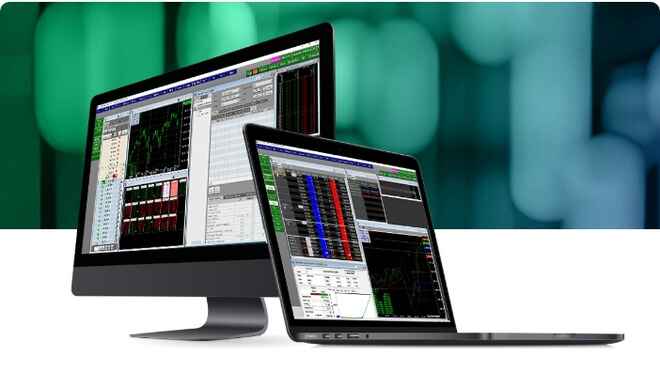Trading Russell 2000 futures can be an exhilarating journey, with peaks and valleys that rival a Hollywood blockbuster. However, it’s not all glitz and glam. Just like action heroes need a safety harness during those daring stunts, traders need risk management strategies to protect their investments. Buckle up, as we guide you through a crash course in how to manage risk in Russell 2000 futures trading.
Why is Risk Management Crucial for Russell 2000 Futures Traders?
We start our journey at the heart of the matter: why Russell 2000 risk control is essential. Futures trading can be a fast-paced thriller. But without careful risk management, it can quickly turn into a disaster film. Russell 2000 futures, representing the smallest 2000 companies in the Russell 3000 Index, offer unique trading opportunities. They provide exposure to small-cap stocks, often more volatile but with higher growth potential than their large-cap counterparts. However, this volatility can amplify both profits and losses, making risk management crucial. Additionally, these futures have unique market influences, including economic indicators more relevant to small businesses. Trading them requires a good understanding of these companies’ specific dynamics and potentially higher market risk due to their lesser liquidity compared to large-cap futures.
Key Elements of an Effective Risk Management Plan
Now that we’ve established why risk management is vital let’s look at Russell 2000 risk strategies.The planning elements of a good risk management strategy are much like plot elements of a great movie: a strong introduction (establishing your trading objectives and risk tolerance), solid character development (understanding the market and your trading instruments), plot twists (having contingency plans), and a satisfying ending (consistently reviewing and improving your strategy).
A well-defined trading plan and risk management strategy will help maintain discipline, mitigate emotional decision-making, and align trades with financial goals and market expectations. Setting risk tolerance levels is crucial to ensure losses never exceed comfort levels, preserving trading capital. Determining appropriate position sizes, which should be based on risk tolerance and the trade’s risk-to-reward ratio, can prevent overexposure to any single trade. Together, these strategies form the foundation of successful, sustainable trading.
Managing Risk with Stop-Loss Orders
Next up, stop-loss orders. Think of these as the trusty sidekicks of your risk management plan. They automatically sell your futures contract if the price falls to a certain level, helping limit your potential loss. It’s like having a co-pilot who ejects you out of your spaceship just before it spirals into a black hole. It may be a rough landing, but it beats the alternative. Setting appropriate stop-loss levels involves understanding market volatility and your risk tolerance. Consider a stop-loss level that aligns with your maximum acceptable loss but doesn’t get triggered by normal market fluctuations. Stop-loss orders can limit potential losses, providing a safety net in fast-moving markets. However, they’re not foolproof; in ‘gapping’ scenarios, orders may get filled at worse levels than set. Additionally, they can prematurely exit trades if set too tight, making strategic placement crucial.
The Role of Diversification in Risk Management
Diversification is to risk management what ensemble casts are to a movie: each component plays a crucial role. Diversifying your investment portfolio can help to cushion the blow if Russell 2000 futures take an unexpected downturn. It’s the Hollywood equivalent of not putting all your money into one blockbuster but instead financing a variety of promising films.
One such diversification strategy is asset allocation, where a trader divides their portfolio among different asset classes like equities, bonds, and commodities. Another is sector rotation, which involves moving investments among economic sectors based on market cycles. Geographic diversification reduces the risk associated with investing in a single country or region. Systematic diversification involves using algorithmic strategies to spread risk across various instruments and time frames. These strategies help create a balanced portfolio, cushioning the blow from potential losses in any single investment.
Managing Leverage and Margin in Russell 2000 Futures Trading
Leverage and margin can be both a trader’s best friend and worst enemy. When used carefully, they can amplify returns; when mismanaged, they can amplify losses. In essence, leverage allows traders to control larger positions with a smaller amount of capital, effectively multiplying potential profits. However, it also multiplies potential losses, making understanding its use vital.
Understanding margin requirements is also key. This is the minimum amount you must hold in your account to open and maintain a leveraged position. If your account equity falls below this requirement due to losses, you’ll face a margin call, potentially forcing you to close your positions at a loss.
Effective management of leverage involves careful position sizing – not risking more than a small percentage of your account on any single trade. Additionally, implementing risk control measures, such as stop-loss orders, can help limit potential losses. By taming the beast of leverage, traders can use its power to their advantage while keeping potential drawbacks in check.
Risk Assessment Techniques for Evaluating Potential Trades
Risk assessment techniques are the script reviews of trading: they help you decide whether a potential trade is worth getting involved in. Techniques can include analyzing historical price trends, calculating potential profit and loss, and using statistical measures like standard deviation and beta. These tools help traders understand the story a particular trade might tell, allowing them to predict whether it’s likely to be a box-office hit or a flop. Incorporating risk assessment into decision-making is a well-informed approach that often leads to more consistent and successful trading decisions.
Handling Adverse Market Conditions and Unexpected Events
Just as our movie heroes have to adapt to unexpected plot twists, traders must be prepared for sudden changes in market conditions. This might involve having contingency plans, maintaining sufficient liquidity, and staying informed about market news and events. Remember, even the best laid plans of mice and men (and traders) often go awry.
Trading is not just about numbers and strategies; it’s a human endeavor, and emotions are a part of the package. By managing emotions effectively, traders can stay level-headed, make better decisions, and enjoy their trading adventure to the fullest.
One effective strategy for maintaining equilibrium during adverse periods is practicing mindfulness. This involves recognizing your emotions without letting them control your decision-making process. A helpful tip is to take a pause and breathe when emotions run high. This provides an opportunity to reassess the situation objectively.
Another tactic is setting realistic expectations. Every blockbuster has its share of setbacks before the triumphant finale. Similarly, losses are a part of trading, and accepting this fact can help maintain emotional balance. Just like our heroes don’t give up at the first sign of trouble, traders should see losses as learning opportunities, not as personal failures.
Risk Monitoring Tools and Techniques for Russell 2000 Futures Traders
In our final act, let’s explore the risk monitoring tools and techniques available to futures traders. These are the special effects of our trading blockbuster, enhancing the experience and giving us a clearer picture of what’s going on.
Firstly, there are technical indicators like moving averages and the Relative Strength Index (RSI). These can help traders spot trends and overbought or oversold conditions in the market. It’s like using night vision goggles in a dark scene – they provide a better view of what’s happening.
Trading platforms often come equipped with risk management tools, such as real-time profit and loss tracking and automatic alerts when certain market conditions are met. Think of these as your behind-the-scenes crew, tirelessly working to ensure everything runs smoothly.
Regular portfolio reviews can also help you identify areas that need attention, making them an essential part of risk management.
Finally, let’s not forget the importance of ongoing education. Webinars, courses, and market analysis reports are all available to help traders stay up-to-date with the latest strategies and market trends. In our movie analogy, this is like the director staying on top of the latest filming techniques and technologies to deliver a better product.
How can RJO Futures Assist Investors with Russell 2000 Futures trading?
Ready to embark on your trading journey with a robust co-pilot? Experience RJO Futures’ leading-edge trading platform equipped with advanced tools designed for precision and performance. Get expert guidance from our savvy advisors and test drive strategies risk-free with our demo accounts.Plus, for those keen to expand their trading knowledge, explore our comprehensive library filled with informative resources. Join us today and let us empower you to navigate the exciting world of trading with confidence and proficiency. Your successful trading adventure starts here.


